Nasturtium
- Scientific name: Tropacolum majus
- Plant family: Tropaeolaceae
- Note: It should not be confused with watercress, whose Latin name is Nasturtium officinale.
- Parts Used: The fresh or dried leaves, flowers, and the seed pods.
- Medical Action: Anti-microbial, anti-bacterial, anti-viral
- Constituents: Glucosilinates; unknown anti-bacterial substance, vitamin C
The flowers contain about 130 mg vitamin C per 100 grams (3.5 oz), about the same amount as is contained in parsley. Moreover, they contain up to 45 mg of lutein per 100 gr, which is the highest amount found in any edible plant.
The Basics
Nasturtium is quite a powerful anti-microbial, especially when used as a local remedy for the treatment of bacterial infection. Internally it can be used with benefit in any bacterial infection but it is especially indicated for respiratory infections suchas bronchitis.
It has been found to be beneficial in influenza and the common cold. Some herbalists report it to be indicated in infections of the female reproductive organs.
Nasturtium is mostly taken fresh by adding leaves, flowers and seed pods into salads and other edibles. The plant is antimicrobial, so it is good to eat this herb for infections. It is useful for respiratory infections like bronchitis, flu and colds, and it is also helpful for reproductive infections. It can help clear mucous from the throat and lungs.
By taking herbal tincture when you first feel a cold coming on, you can help speed that cold on its way. The seed pods may be antifungal. Tinctures can be made in alcohol or vinegar to preserve the nutrients of the plant for later use. Vinegar can be put on cooked greens for a mustardy touch.
The mustard oils contained in nasturtium have an antibacterial and antiviral effect and can protect against infectious and undesired yeasts such as candida. They can be used to relieve pain, improve wound healing, treat digestive disorders and bladder infections and infections of the upper respiratory tract.
Description
Nasturtium is found in many gardens with its round flat leaves and bright cheery flowers. It comes in many different colors and some varieties have variegated leaves as well.
Nasturtium is both a decorative garden annual as well as a useful culinary herb. There are two types of nasturtium; a trailing type (Tropaeolum majus) that can be trained to climb or allowed to spread on the ground and a bush type (Tropaeolum minus) that forms loose mounds.
Nasturtium produces colorful flowers all summer and has attractive water lily-like foliage. It is useful as a plant for garden beds as well as for containers. The big beautiful flowers and leaves with their unusual shield-like shape are particularly striking and ornamental. The plant forms up to 4 m long shoots that bear flowers throughout the year.
Because it is not hardy, all this splendor sadly ends with the first frost.
Habitat and Cultivation
The plant is originally from South America and Central America, where it grows wild, especially in the mountains. The one-year herbaceous plant is cultivated mainly as an ornamental plant. Only the garden nasturtium (Tropaeolum majus) is grown as a commercial and medicinal plant.
Nasturtium prefers sun or partial shade and light, loose, not too nutritious soil. It thrives in cool weather. In heat or planted in heavy and very fertile soil this plant develops only few flowers. They are a good plant to add to any flower bed because they have a natural ability to keep bugs away from both themselves and other plants.
Because nasturtium does not transplant well, it is suggested to directly sow seeds into the garden after danger of frost is past. Keep seed bed moist. Germination of seed can be enhanced by soaking seeds overnight in water prior to planting.
Sowing is possible from May to July outdoors. The seeds germinate particularly well when allowed to pre-soak for about five hours in warm water or chamomile tea before sowing. Broad-cast seeding or in rows. Between +15 and 18 °C, germination takes 10-20 days.
For the tastiest leaves, keep plants well watered as this helps to moderate the spiciness of the leaves and flowers. Heat stressed plants often produce leaves and flowers that may be more pungent than most people prefer. If plants show signs of decline or become leggy during the summer, cut them back lightly and they will produce new growth for the remainder of the season.
Nasturtiums are also considered widely useful companion plants. They repel a great many cucurbit pests, like squash bugs, cucumber beetles, and several caterpillars. They have a similar range of benefits for brassica plants, especially broccoli and cauliflower. They also serve as a trap crop against black fly aphids. They also attract beneficial predatory insects.
Harvesting and Storage
Both the leaves and flowers can be harvested for use throughout the season. Young leaves are most tender and flavorful. Nasturtium flower buds and immature seed pods are also edible and have been likened to capers when pickled. Leaves and flowers can be stored in plastic bags in the refrigerator.
Medicinal Uses
People take nasturtium in combination with other herbs for urinary tract infections (UTIs), swollen airways, cough, and bronchitis. Nasturtium is sometimes applied directly to the skin in combination with other herbs for mild muscular pain.
Nasturtium contains vitamin C and might help fight bacteria, fungi, viruses, and tumors.
The dried ripe buds have a strong laxative effect and unlike many conventional germicides, nasturtium will not damage the intestinal flora.
It is a good source of immunity-boosting vitamin C and may be used as a natural remedy for helping the body overcome and prevent the common cold and influenza.
It is one of the more powerful antibacterial plants available. When applied externally, it also works against various fungal infections, including yeast infection.
It is most effective when it’s used fresh and made into a compress for external use or into an infusion for internal infections. The crushed fruits can be applied as a hot poultice for sores and boils.
Nasturtium has a reputation for promoting the formation of red blood cells, and it’s been used in folk medicine as a remedy against scurvy.
The herb has been used as a remedy for hair loss and to stimulate hair growth. Additionally, it was used traditionally to treat muscular pain.
Despite its value as a medicinal plant and positive results in clinical trials, the freshness factor may be the reason why nasturtium is not a more widely used herb.
Preparation and Dosage
Nasturtium is most effective when fresh. Use it externally as a poultice or compress.
- Infusion: Pour a cup of boiling water on 1 to 2 teaspoonfuls of the fresh leaves and let it infuse for 10 to 15 minutes. This should be drunk three times a day.
- Tincture: Take 1 to 4 ml three times a day.
Combinations
Nasturtium can be tinctured with garlic and Echinacea for an antibiotic effect.
Flashing Flowers
Das Elisabeth Linné-Phänomen, or the Elizabeth Linnæus Phenomenon, is the name given to the phenomenon of “Flashing Flowers”. Especially at dusk, the orange flowers may appear to emit small “flashes”. Once believed to be an electrical phenomenon, it is today thought to be an optical reaction in the human eye caused by the contrast between the orange flowers and the surrounding green. The phenomenon is named after Elisabeth Christina von Linné, one of Carl Linnaeus’s daughters, who discovered it at age 19.
Folk and Common Names
- Capucine grande
- Espuela de galán
- Flor de la sangre
- Indian cress
- Kapuzinerkresse
- Llagas de Cristo
- Marañuela
- Mastuerzo de Indias
- Mastuerzo de pelón
- Monks Cress
- Taco de reina
- Trädgårdskrasse
Culinary Uses
Garden nasturtium is a climbing or ground-covering culinary herb with edible flowers. The flower buds and seeds can be pickled in vinegar or brine and used as a substitute for capers.
All its parts are edible. The flower has most often been consumed, making for an especially ornamental salad ingredient; it has a slightly peppery taste reminiscent of watercress, and is also used in stir fry. The unripe seed pods can be harvested and dropped into spiced vinegar to produce a condiment and garnish, sometimes used in place of capers.[13]
Both the leaves and flowers are edible, and make terrific additions to salads. They have a peppery taste that adds zest to anything you add it to. Use in green salads, potato salads, egg dishes and seafood dishes as well as vinegars. Flowers used as edible decorative elements to foods.
Nasturtium leaves can be added to salads and sandwich spreads. Chop some up and add it to egg or potato salad. Flowers and seeds can be added to salads for color and zest.
- Recipes can be found here: Eating To Live – Nasturtium
The peppery flavor is similar to watercress. These edible plants contain glucosinolates. These cause the spicy, cress-like taste and also explain the name of the plant Monks Cress.
Cautions and Contraindications
Nasturtium contains mustard oil and can cause skin irritation, especially if used for a long time.
Pregnant or breastfeeding: Not enough is known about the use of nasturtium during pregnancy and breast-feeding. Stay on the safe side and avoid use.
People with kidney diseases or ulcers of the stomach or intestinal tract should not use this herb in any form.
Despite positive results in clinical trials, the conventional medical community does not recognize the benefits of the herb.
Nasturtium should not be used on small children and infants. If you suffer from gastric or intestinal ulcers or kidney problems, you should not take these herbal remedies orally. The herb contains benzyl mustard oil which can irritate the skin. It can also cause gastrointestinal irritation. Overdosing on the herb can cause albuminuria (the presence of protein in the urine).
One Response to Nasturtium
Leave a Reply to Heather Mcinnes Cancel reply
Vincent: Mulberry
Rennie Luttrull: queen-annes-lace-seeds
Rosanna: Spignel aka Bald Money
Annamarie Squatrito: Fumitory
EILEEN Klinghagen: Pumpkin
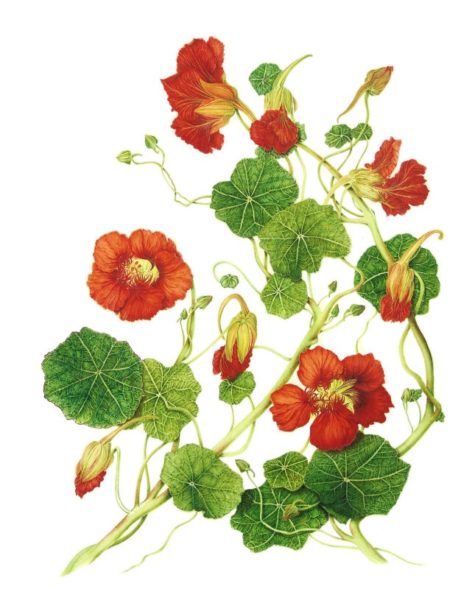
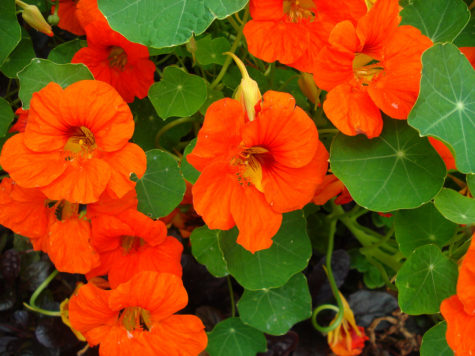
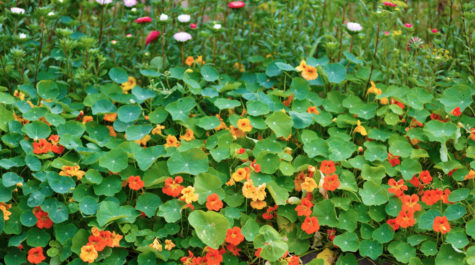
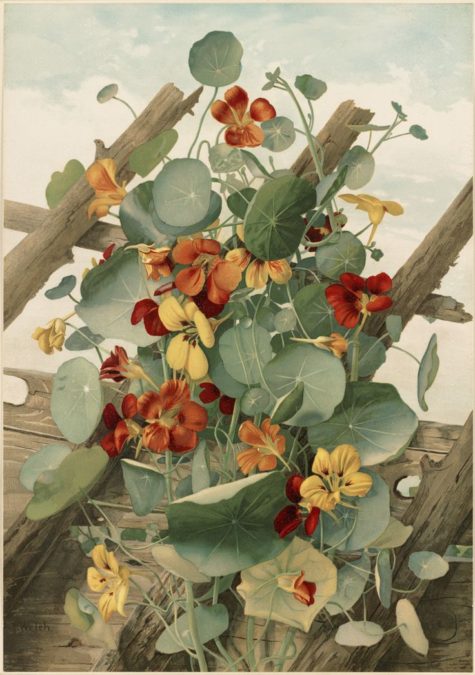
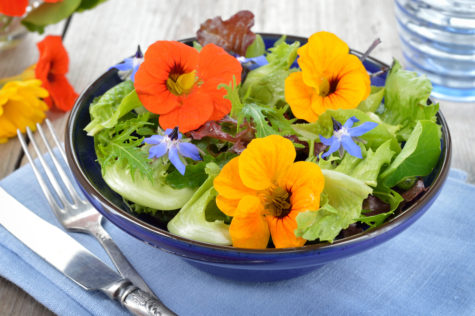


I heard it’s ok to put the nasturtium leave in your bra when you suffering from mastitis. Is this true , my daughter in law has this condition and is breast feeding